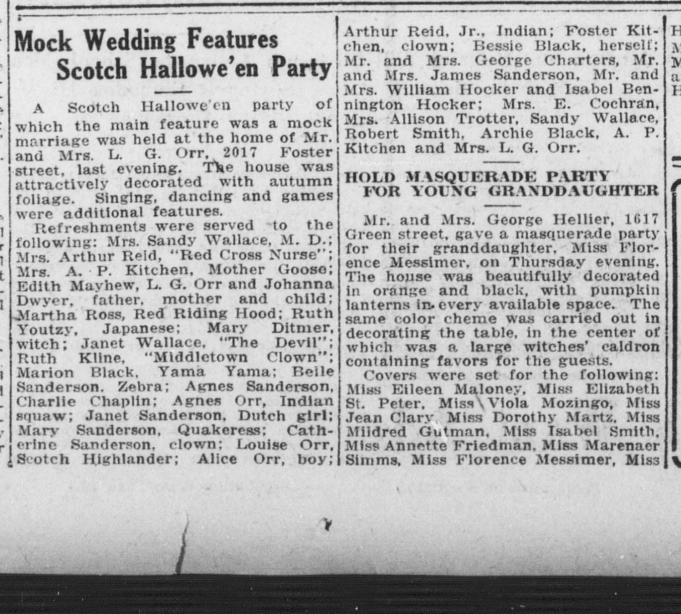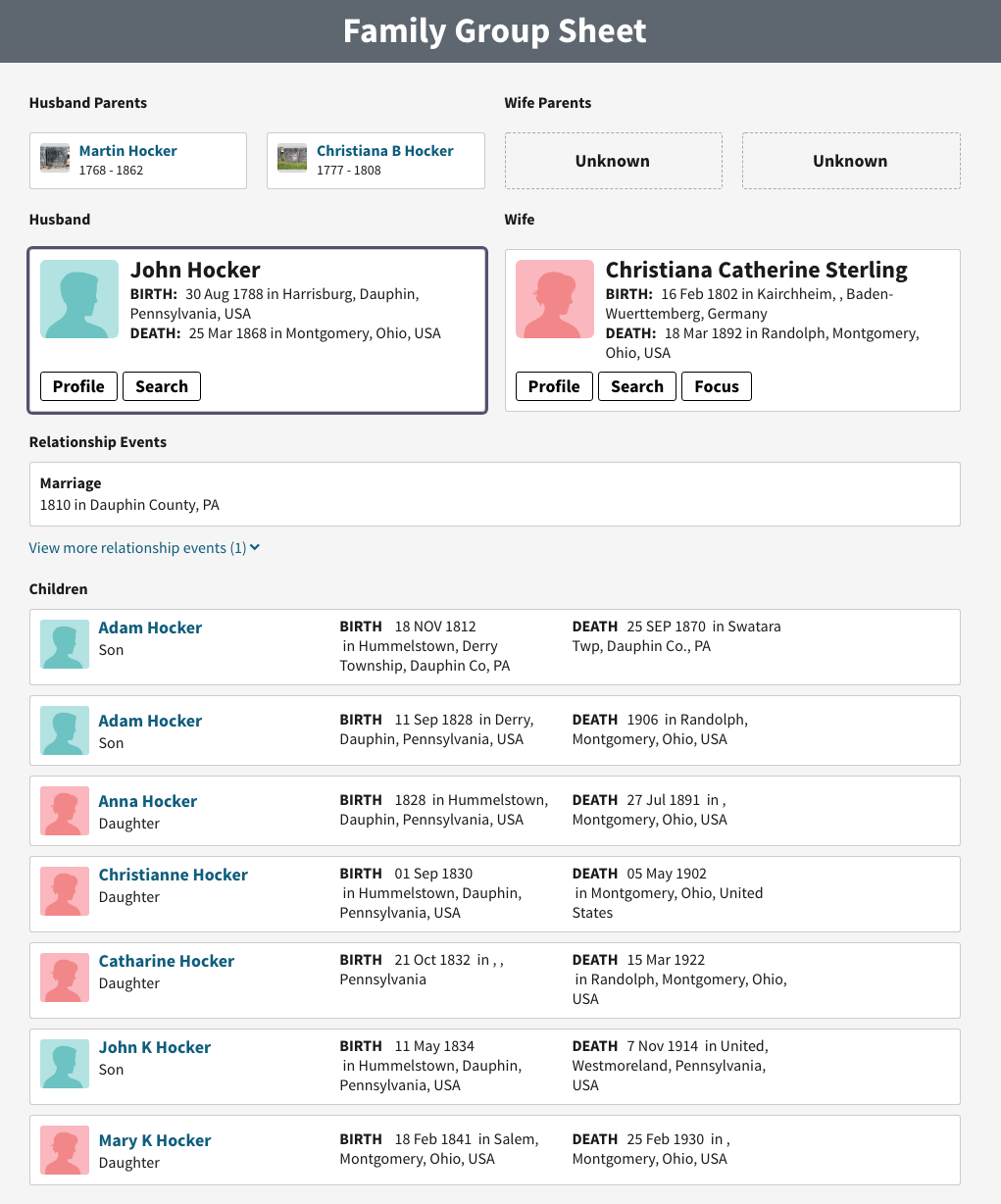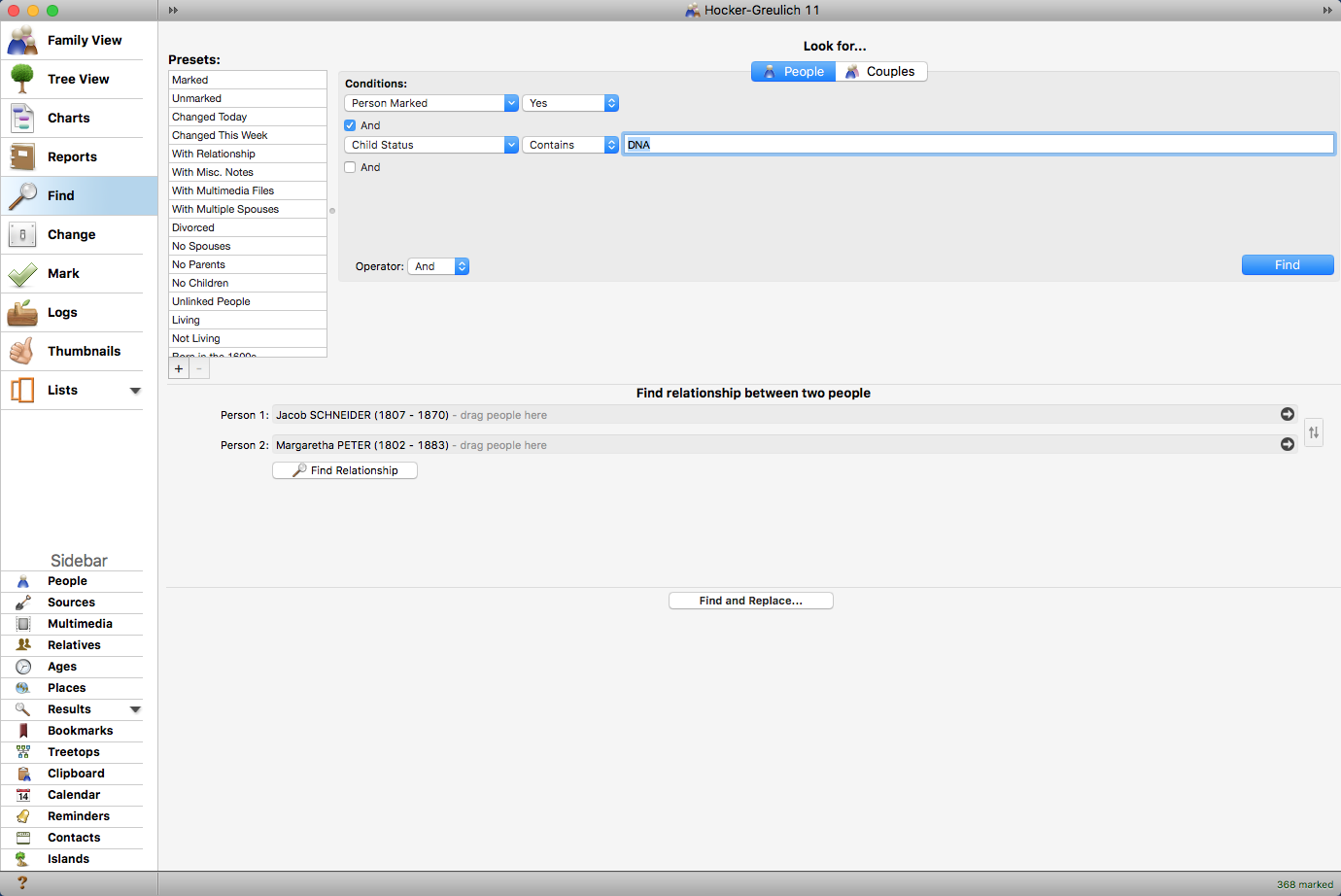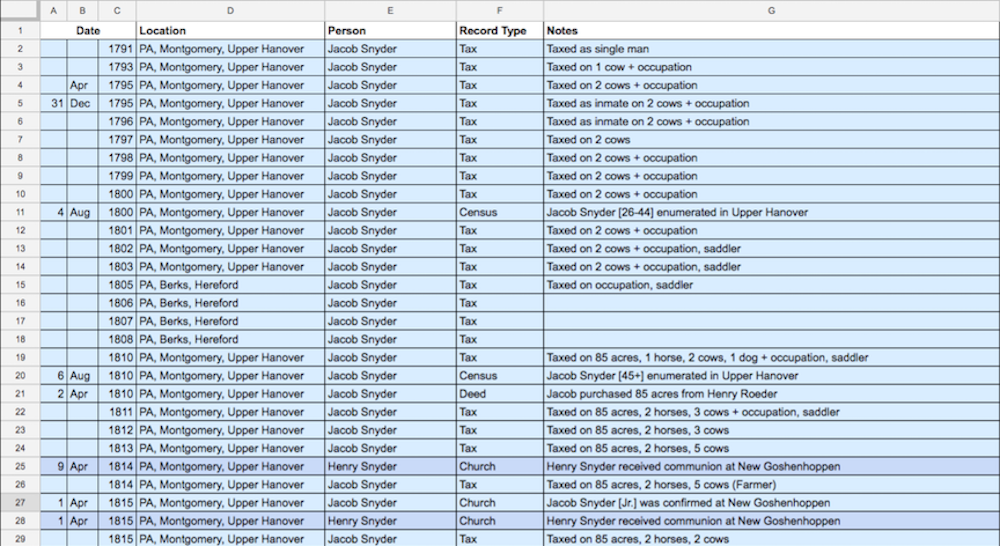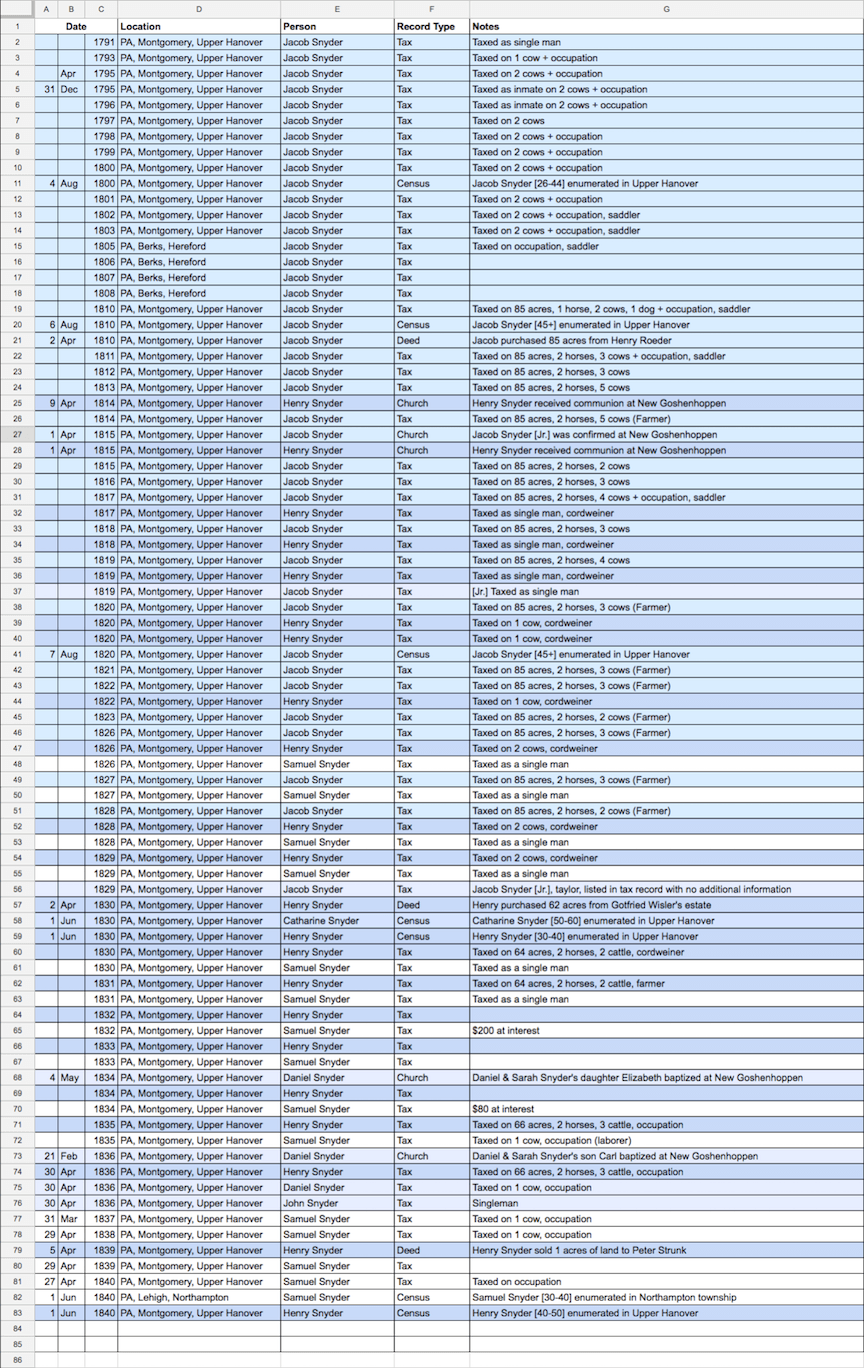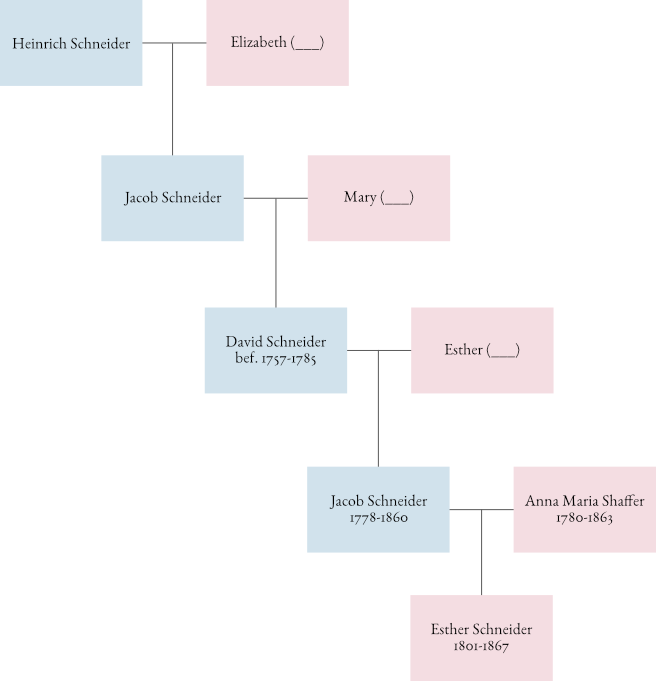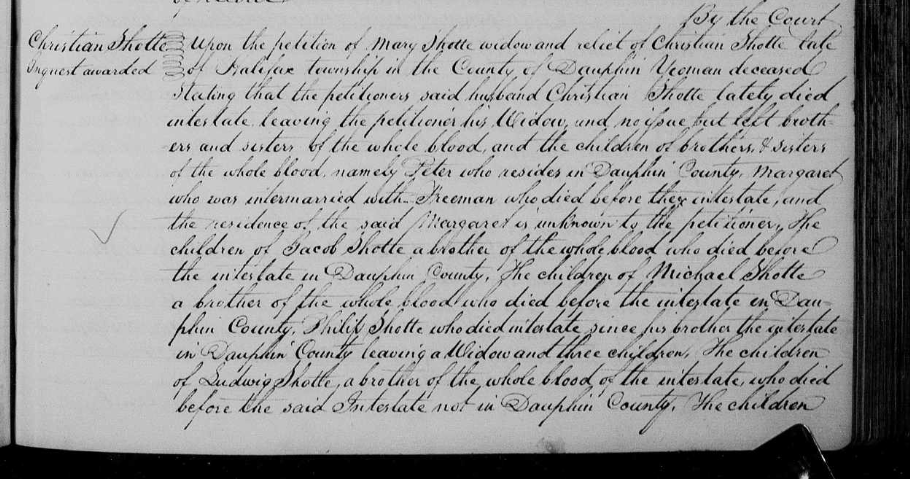So another Schneider family—actually two have come up in my ongoing search to find Jacob Schneider’s family. It’s a fairly common occupational surname, but if they are related, just not to Jacob, they will be the fourth and fifth Schneider families in my pedigree. As a comparison, I’m only descended from one Smith and one Jones family.
I’ve been working with the matches I share with four cousins who presumably descend from Jacob and Catharina (Nuss) Schneider’s son Jacob. They each share two DNA segments with me. One of them, however, shares three segments with my Mom.
I noticed recently that while he shares some of the same shared matches that I’ve traced back to the Nuss family, he also shares DNA with another cluster of individuals. Wondering if perhaps this group represented the Schneider side of the family, I started researching these matches.
As with most of my DNA matches, I haven’t been able to research most of them. No family trees. Usernames instead of real names. No locations. But there were a handful for whom I was able to build pedigrees.
By tracing the pedigrees of these matches, I was able to find a common ancestral couple: Conrad Schneider and his wife Catharina Betz. This cluster includes descendants from two of their offspring—Catharina (Schneider) Bender and Balthasar Schneider. To better understand all the relationships, I built a chart showing how each match fits in the family and the amount of DNA (in centimorgans) they share with my mother.
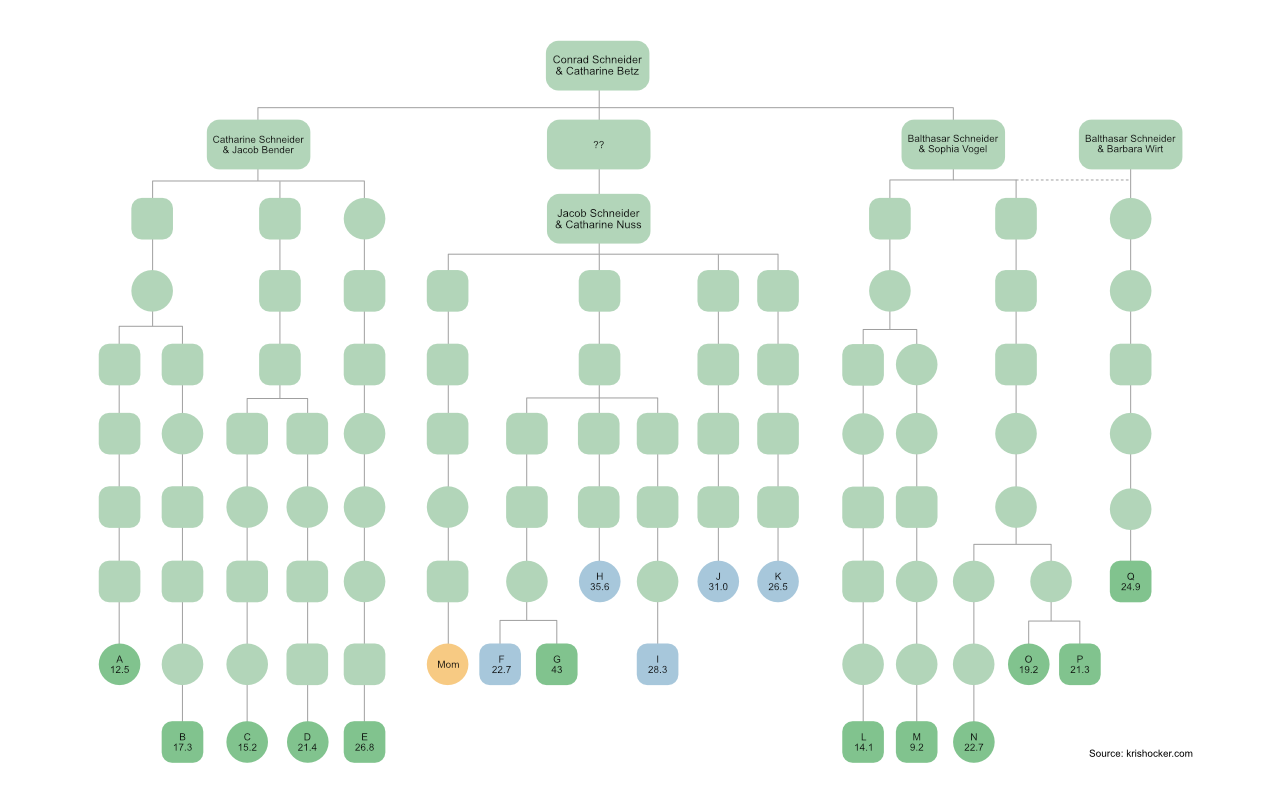
Schneider DNA matches chart
On the chart, my Mom is shown in yellow, my Schneider cousins who match the presumed Nuss cluster in blue, and those cousins who match in the presumed Schneider cluster in the darker green.
The question is how does Jacob Schneider fit into this family. Assuming, of course, that these DNA matches indicate that he does and not some other currently unknown family connection.
I tried fitting Jacob into the family three different ways in the What Are the Odds? tool. This tool allows you to test out various hypotheses using the shared cM from multiple matches to create a statistical probability. The first hypothesis places Jacob as a grandchild of Conrad and Catharina, the second as a son, and the third as a nephew to Conrad. According to the tool, option three is not statistically possible. Both option one and two are equally possible, statistically.
However, based what I know about the family members, it’s more likely that Jacob was a grandchild of Conrad and Catharina. I estimate that Jacob was born between 1756 and 1765 based on his recorded ages in multiple census enumerations. Conrad was born 17 March 1699 and died between 12 July and 10 August 1759. he cannot be Jacob’s father. His age makes it unlikely that he’s Jacob’s father. Furthermore, no son named Jacob is mentioned in Conrad’s probate records.
So, if my Jacob was a grandson of Conrad, who were his parents? On the Schneider side of the family, there are five options—Conrad’s sons:
- Leonhard Schneider (1725-1797)
- Elias Schneider (1733-?)
- Michael Schneider (1735-1806)
- Balthasar Schneider (1738-1800)
- Henry Schneider (1740-1821)
Leonard Schneider (1725-1797), Conrad’s eldest son, married Maria Christina Hens in 1752 and had five surviving daughters. He married three more times after her death, but according to his estate papers, did not have a son named Jacob.
Elias Schneider (1733-?) married Anna Maria Nuss, Conrad Nuss’ sister, 7 December 1756 at Old Goshenhoppen Church. I only have information on the births of three children: Conrad (1757), Anna Margaretha (1764), and Catharina (1771). My Jacob, born 1756-1765, could easily fit into this family. But at this point I have nothing to indicate that he does—besides, maybe, DNA.
Michael Schneider (1735-1806) married Anna Maria Cressman. His eldest son, named Jacob Adam, was born in 1765, but he married Elizabeth Yost and lived in Bucks County. He’s not my Jacob.
Balthasar Schneider (1738-1800) married Maria Sophia Vogel at Old Goshenhoppen 3 December 1757. I did not find a baptismal record for a Jacob in church records associated with other children of Balthasar. However, the will of Balser Schneider of Heidelberg Township, Northampton (now Lehigh) County, does refer to a son named Jacob, as far as I can interpret.
However, three of the matches I’ve placed as descended from him can be traced back to Jacob Schneider (1774-1850) and Margaret Brandstetter (1783-1836) of Lehigh County. Given the location and birth year, I find it more probable that this Jacob is the son of Balthasar, than my Jacob.
Henry Schneider (1740-1821) married Maria Christina Freyfogel on 14 September 1763. He lived in Marlborough Township and had a son named Jacob born in 1765. Based on analysis of the baptismal records for Henry’s children at Old Goshenhoppen, however, I would conclude that this Jacob married Elizabeth (___) and had children starting in the early 1790s baptized at Old Goshenhoppen. This rules him out as a possible match to my Jacob.
So, at this time, I have no documentary evidence that includes a possible match for my Jacob to this family. Given the DNA data I have, the probabilities for each possibility are equal regardless of which son he may descend from. But I think I may have narrowed it down to one.
My current working hypothesis is that he may be a son of Elias and Anna Maria (Nuss) Schneider. It would certainly help to explain the apparently close ties to the Nuss family and the large number of genetic matches to the Nuss family I’m finding in my research.
Unfortunately, Elias is proving quite elusive. He served as an administrator of his father’s estate in 1753 and remained in the area until at least 1771, based on his children’s baptisms at Old Goshenhoppen. But I’ve found no other evidence of him in Upper Salford or Marlborough townships. I may have to get really creative to find a paper trail for him or his family members.
Note: Minor edit for third option on What Are the Odds?. It should have been nephew, not brother. (2 Oct 2018)
Note: Correction of Conrad’s date of death. (8 Oct 2018)
Note: Added “to the Nuss” family to provide additional clarity regarding my hypothesis for Jacob’s parentage. (13 Dec 2020)
